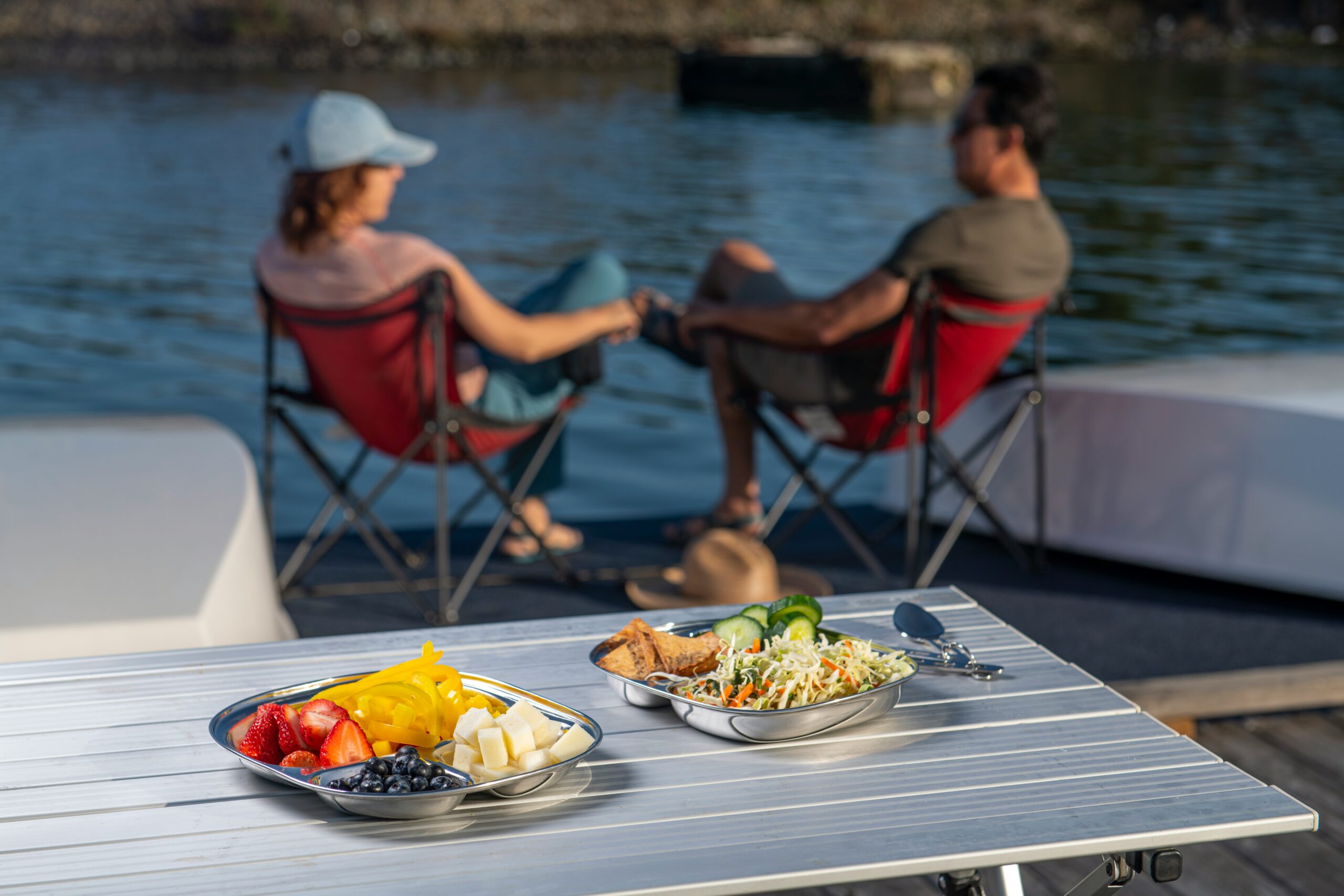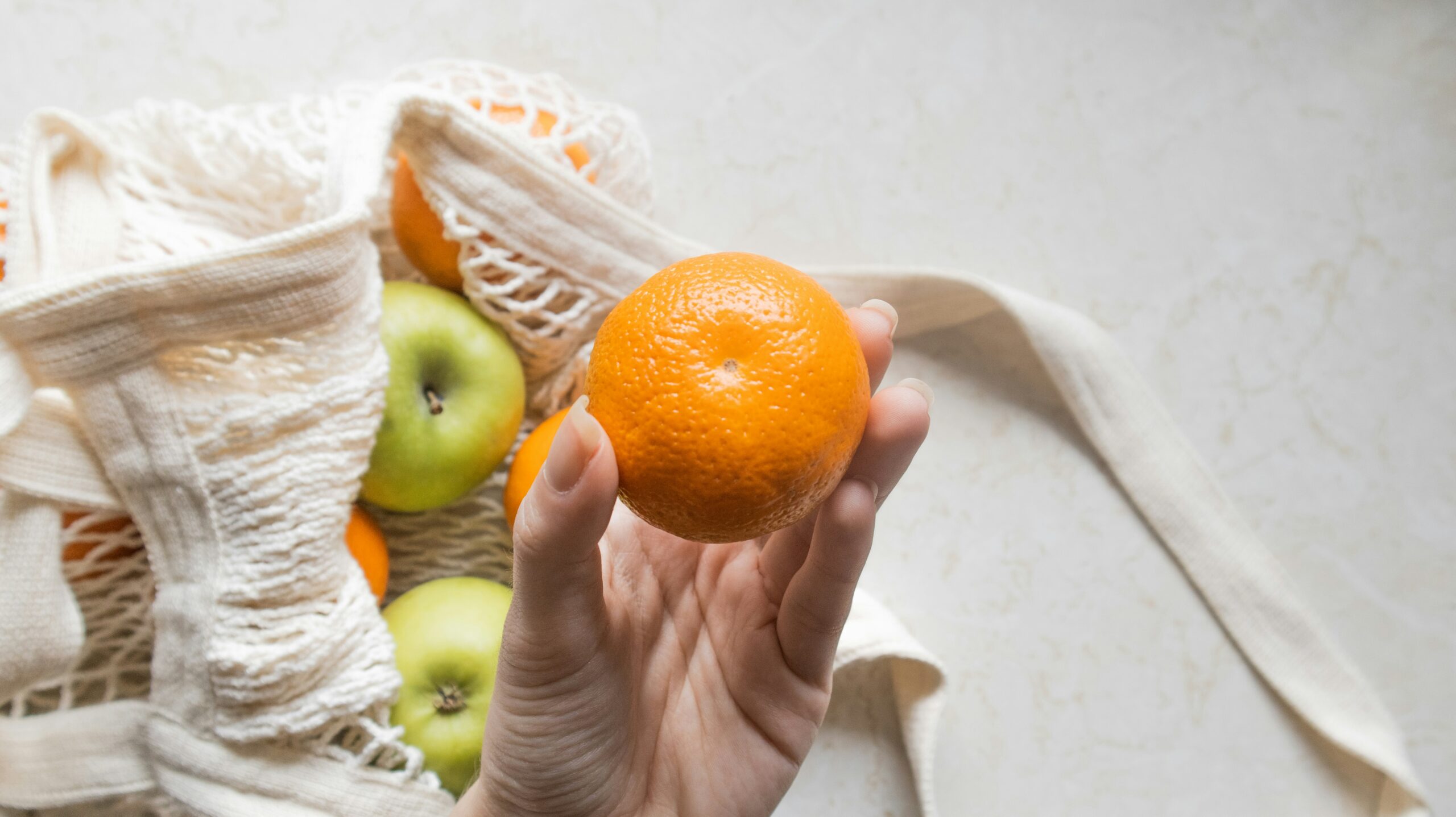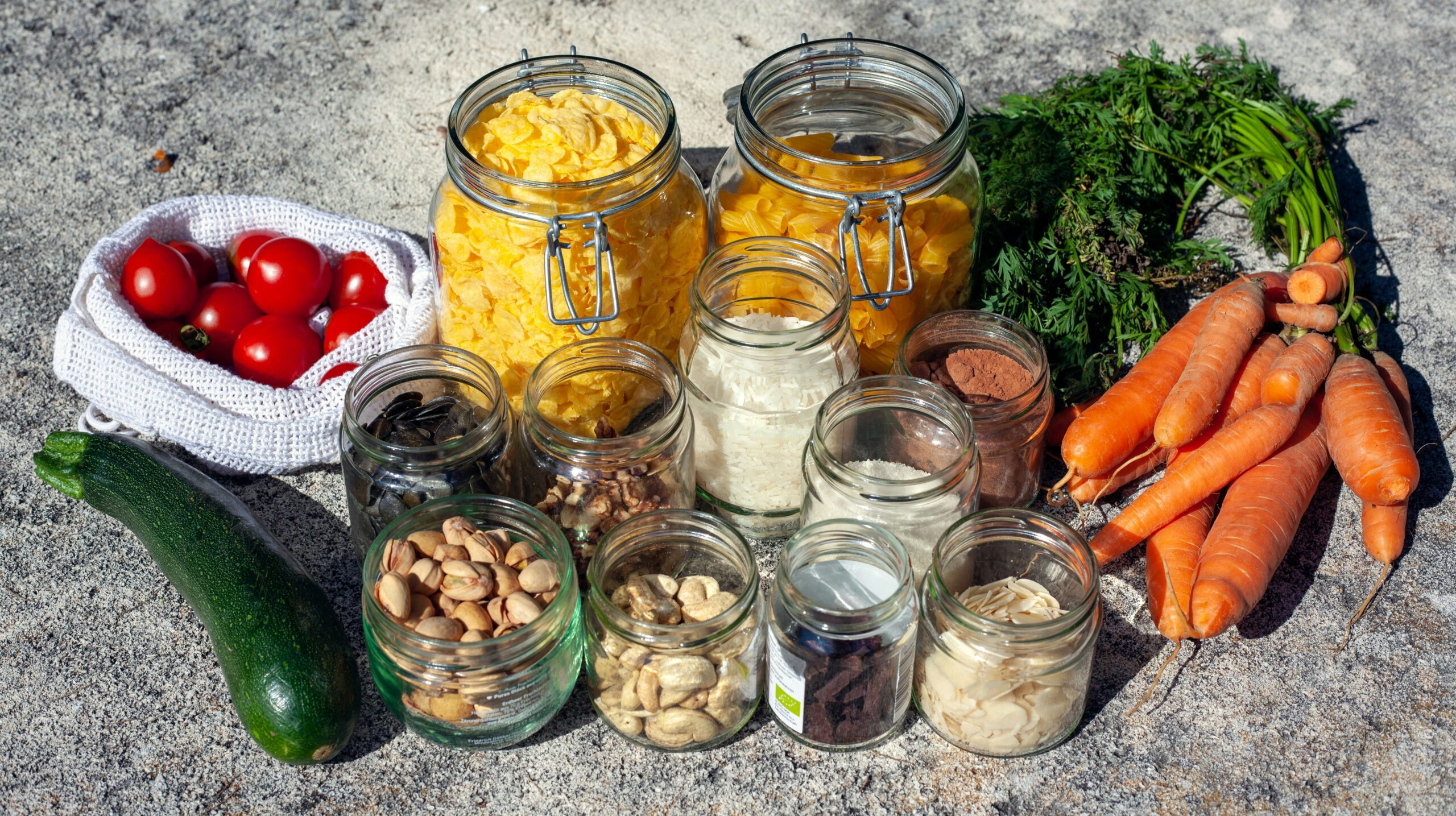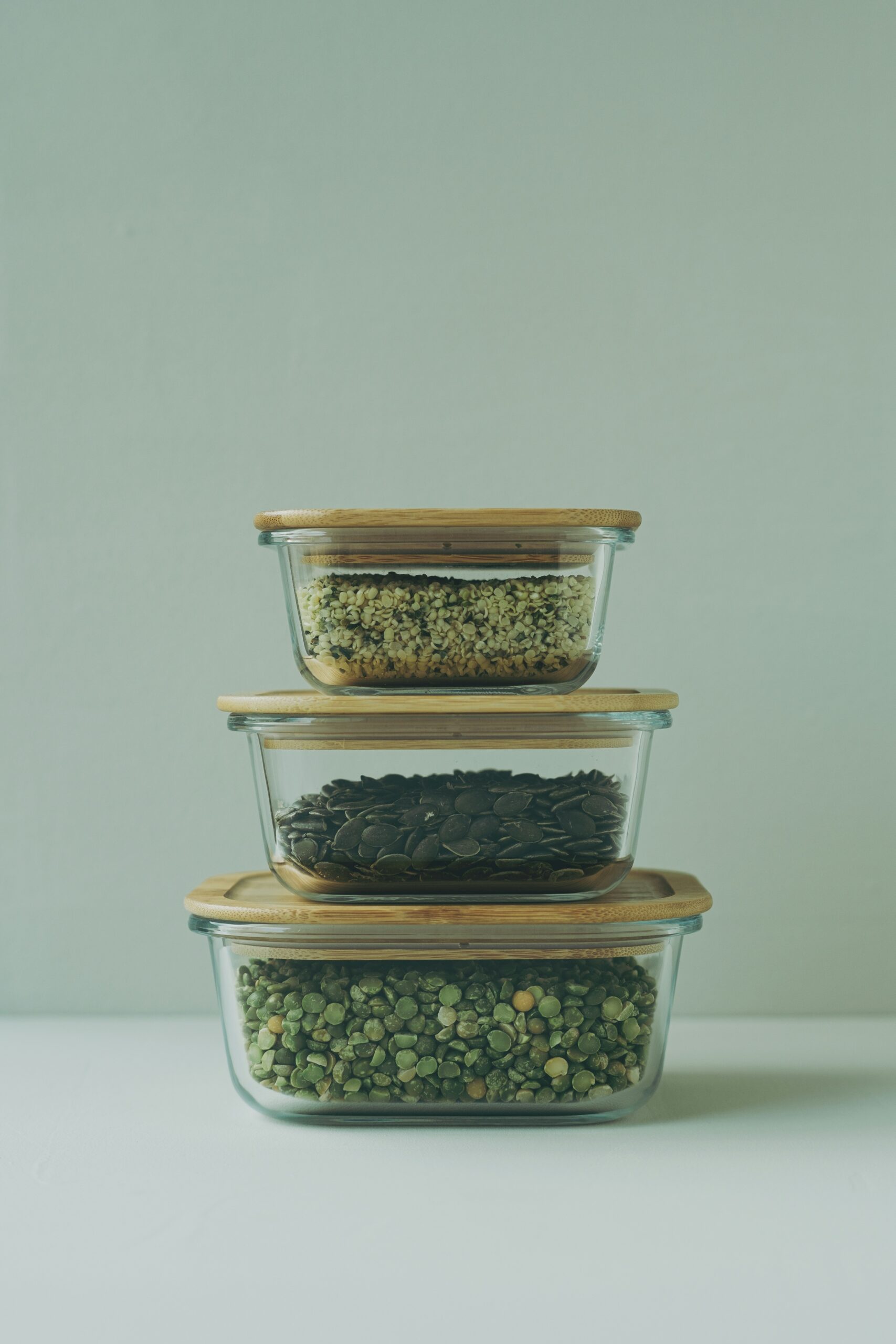Zero waste meals are a great way to reduce your environmental impact while still enjoying delicious and nutritious food.
You can significantly reduce the amount of waste you produce in the kitchen, by making a few simple changes to your meal planning and preparation.
We’ll explore some of the key principles of zero waste cooking and provide tips and strategies for getting started.

One of the first steps to reducing waste in the kitchen is to focus on using every part of your produce. This means learning how to cook with vegetable stems, fruit peels, and other parts of your ingredients that you might normally discard.
You can transform these scraps into delicious and nutritious meals that are both tasty and sustainable, by getting creative and exploring new recipes and cooking techniques.
Another important aspect of zero waste cooking is proper food storage. You can help extend the freshness of your food and reduce the amount of waste you produce, by using reusable containers, jars, and bags.
Additionally, composting your kitchen scraps is a great way to reduce your environmental impact and create nutrient-rich soil for your garden or houseplants.
Key Takeaways
- Zero waste meals are a sustainable and environmentally-friendly way to enjoy delicious and nutritious food.
- Using every part of your produce and proper food storage are key principles of zero waste cooking.
- Composting kitchen scraps is a great way to reduce waste and create nutrient-rich soil for your garden or houseplants.
Table of Contents
Table of Contents
Getting Started with Zero Waste Meals

If you’re interested in reducing your environmental impact and saving money, then zero waste meal planning is a great place to start. You can reduce food waste and save money on groceries, by planning your meals ahead of time and buying only what you need. Here are some tips to help you get started:
Understanding Zero Waste Principles
Before you start planning your zero waste meals, it’s important to understand the principles of zero waste. The goal of zero waste is to reduce the amount of waste that is sent to landfills and incinerators by reusing, recycling, and composting as much as possible.
When it comes to meal planning, this means using up all of the food that you buy, composting food scraps, and avoiding single-use packaging.
Essential Zero Waste Cooking Tools
To make zero waste meal planning easier, there are a few essential tools that you’ll need in your kitchen. These include:
- Reusable containers: Use reusable containers to store leftovers and to buy foods in bulk.
- Cloth napkins: Instead of using paper napkins, switch to cloth napkins that can be washed and reused.
- Reusable bags: Use reusable bags to carry groceries and produce instead of single-use plastic bags.
- Compost bin: Set up a compost bin in your backyard or use a composting service to dispose of food scraps.
You’ll be able to stay organized and reduce your waste when cooking and preparing meals, by having these essential tools in your kitchen.
Zero waste meal planning is a great way to reduce your environmental impact and save money on groceries.
Meal Planning and Preparation
Creating a Zero Waste Meal Plan
Meal planning is the foundation of a zero-waste lifestyle. It enables you to reduce food waste, save money, and ensure that you have healthy meals all week long. When creating a zero-waste meal plan, start by taking inventory of what you already have in your pantry and fridge. This will help you avoid buying unnecessary items and wasting food.
Next, plan your meals around the ingredients you already have. This will help you use up any leftovers and reduce food waste. Incorporate seasonal produce into your meals, as it is often more cost-effective and has less packaging.
Smart Shopping for Zero Waste Ingredients
When shopping for zero-waste ingredients, aim to buy items with minimal packaging or no packaging at all. Bring your reusable bags, jars, and containers to the store to avoid using plastic bags and containers.
Buy in bulk when possible, as it reduces the amount of packaging and saves money. Look for fresh produce over packaged produce, and choose whole foods over processed foods.
Meal Prep Strategies
Meal prep is a crucial step in reducing food waste and saving time during the week. When meal prepping, focus on using up any leftovers and aging produce. This will help you reduce food waste and save money.
Invest in reusable containers to store your prepped meals. Glass containers are a great option as they are durable and can be used for both storage and reheating.
Incorporate batch cooking into your meal prep routine. This involves cooking large batches of food and portioning it out for the week. It saves time and reduces food waste.
Zero Waste Recipes and Cooking Techniques
Cooking with Scraps and Leftovers
One of the best ways to reduce food waste is by cooking with scraps and leftovers. You can use vegetable scraps to make a flavorful stock that can be used as a base for soups, stews, and stir-fries. To make vegetable stock, simply simmer your scraps (such as onion skins, carrot tops, and celery leaves) in water for an hour or two. Strain the liquid and discard the solids.
Another way to use up leftover vegetables is by making a hearty soup. Simply sauté your vegetables with some garlic and onion, add some vegetable broth or water, and let it simmer until the vegetables are tender. You can also add some cooked pasta or rice to make it more filling.
If you have leftover bread, don’t throw it away! You can use it to make croutons, breadcrumbs, or even bread pudding. To make breadcrumbs, simply toast the bread, let it cool, and pulse it in a food processor until you have fine crumbs.
Making the Most of Your Pantry
Another way to reduce food waste is by making the most of your pantry. Keep a well-stocked pantry with staples like rice, beans, pasta, and canned goods. These ingredients can be used to make a variety of meals, from stir-fries to pasta dishes.
When cooking pasta, be sure to save some of the cooking water. It can be used to thicken sauces and add flavor to dishes. You can also use canned goods like beans and tomatoes to make a flavorful sauce for pasta or to add to soups and stews.
Finally, don’t forget about herbs and spices! They can add a ton of flavor to your meals and can be used in a variety of ways. Use them to season your soups, stews, and stir-fries, or add them to your bread dough for a flavorful loaf.
You can reduce food waste and create delicious, zero waste meals, by making the most of your pantry and cooking with scraps and leftovers.
Using Every Part of Your Produce

When it comes to zero-waste cooking, using every part of your produce is essential. Not only does it help reduce food waste, but it also maximizes the nutritional value of your meals. Here are some creative ways to use peels and ends, as well as ways to maximize the use of stems and leaves.
Creative Ways to Use Peels and Ends
Carrot and broccoli stems are often thrown away, but they can be used in a variety of ways. You can chop them up and add them to stir-fries or soups, or you can turn them into a tasty slaw. Simply grate the stems on the medium holes of a box grater, and toss the shreds with a light, sweet, and tangy mayonnaise dressing. Add chewy raisins, sunflower seeds, red onions, or even bacon bits to suit your fancy.
Fruit peels can also be used in creative ways. For example, citrus peels can be used to make a delicious syrup. Submerge 4-8 citrus peels in white distilled vinegar and let sit for at least 2 weeks. Then, strain it into a pot and add ¾ cup of sugar. Slowly simmer it for three minutes and add salt to taste. Once it’s cool, pour it into a jar and refrigerate. You can use this syrup to sweeten cocktails, tea, or even desserts.
Maximizing the Use of Stems and Leaves
Stems and leaves are often overlooked, but they can be a great source of nutrition. For example, beet greens are packed with vitamins and minerals and can be used in a variety of dishes. You can sauté them with garlic and olive oil, or you can chop them up and add them to salads.
Broccoli leaves are also edible and can be used in a variety of ways. You can chop them up and add them to stir-fries or soups, or you can use them as a wrap for sandwiches or burritos. They have a slightly bitter taste, so they pair well with sweet or savory flavors.
When it comes to seeds, don’t throw them away! Pumpkin seeds, sunflower seeds, and sesame seeds are all edible and can be used in a variety of dishes. You can roast them with a little bit of salt and use them as a topping for salads or soups. You can also grind them up and use them as a seasoning for meats or vegetables.
Using every part of your produce is a great way to reduce food waste and maximize the nutritional value of your meals. Get creative and try out some of these tips in your next zero-waste meal!
Storing Food to Extend Freshness

When it comes to zero waste meals, proper food storage is key to extending the freshness of your food and reducing food waste. Here are some tips to help you store your food in a sustainable way:
Proper Storage Techniques
Proper storage techniques can help extend the life of your food and reduce food waste. For example, storing your veggies and berries in the fridge can help keep them fresh for longer. Be sure to store them in airtight containers or reusable beeswax wraps to prevent them from drying out.
When it comes to leftovers, make sure to store them in airtight containers and label them with the date they were made. This will help you keep track of what needs to be eaten first and prevent food waste.
For sourdough bread, store it in a paper bag or a bread box to keep it fresh. Avoid storing it in plastic bags, as this can cause it to become soggy.
Utilizing the Freezer for Zero Waste
The freezer is a great tool for reducing food waste. Not only can you freeze leftovers to eat later, but you can also freeze food scraps to use in future meals. For example, you can freeze vegetable scraps to make a homemade vegetable broth.
When using the freezer, make sure to use airtight containers or reusable silicone bags to prevent freezer burn. Be sure to label your containers with the date and contents, so you know what you have on hand.
In addition, you can freeze berries and other fruits to use in smoothies or baked goods later. Simply wash and dry them, then freeze them on a baking sheet before transferring them to a container or bag.
If you’re a meat eater, check out my article on how to freeze meat without plastic.
Composting Kitchen Scraps

Composting is an excellent way to reduce waste and create nutrient-rich soil for your garden. By composting your food scraps, you can turn what would otherwise be waste into a valuable resource.
Setting Up a Home Composting System
Setting up a home composting system is easy and requires only a few basic materials. You can purchase a compost bin or make your own using a container with a lid. Place the bin in a shady spot in your yard and add a layer of brown material, such as dry leaves or shredded newspaper, to the bottom.
Then, add a layer of green material, such as food scraps or grass clippings. Continue layering brown and green materials until the bin is full. Turn the compost regularly to aerate it and speed up the process.
What Can and Can’t Be Composted
Not all food scraps can be composted. Meat, dairy, and oily foods should be avoided, as they can attract pests and slow down the composting process. However, most fruit and vegetable scraps, eggshells, and coffee grounds are excellent composting materials. You can also add yard waste, such as leaves and grass clippings, to your compost bin.
Remember to keep your compost moist, but not too wet, and avoid adding too much of any one material. A good rule of thumb is to aim for a ratio of 3 parts brown material to 1 part green material.
Composting your food scraps is an easy and effective way to reduce waste and create nutrient-rich soil for your garden. With a little effort, you can turn your kitchen scraps into a valuable resource that will benefit both your garden and the environment.
Zero Waste Substitutions and Alternatives

Finding Replacements for Single-Use Items
One of the easiest ways to reduce waste is to replace single-use items with reusable alternatives. For example, instead of using plastic wrap to cover leftovers, you can use reusable beeswax wraps or silicone lids. For takeout meals, bring your own containers or ask for a reusable option at the restaurant. You can also replace paper towels with cloth towels.
Another way to reduce waste is to opt for package-free options. Many grocery stores now offer bulk sections where you can bring your own containers to fill with items like grains, nuts, and spices. You can also find package-free options for personal care items like shampoo bars and toothpaste tablets.
Homemade Alternatives to Store-Bought Products
Making your own products is a great way to reduce waste and save money. For example, instead of buying almond milk in a carton, you can make your own using almonds and water.
You can also make your own nut butter, by blending nuts in a food processor. Homemade salad dressings are another easy swap for store-bought options that often come in plastic bottles.
When it comes to cleaning products, you can make your own all-purpose cleaner using vinegar, water, and essential oils. You can also make your own laundry detergent using soap nuts or castile soap. You can reduce packaging waste and avoid harmful chemicals found in many store-bought products, by making your own products.
Overall, finding replacements for single-use items and making your own products are great ways to reduce waste and live a more sustainable lifestyle. You can make a positive impact on the environment, by being mindful of your choices and opting for zero waste alternatives.
Innovative Zero Waste Meal Ideas

When it comes to zero waste meals, there are plenty of innovative ideas that can help you reduce food waste while still enjoying delicious and satisfying meals. Here are some ideas to get you started:
Breakfasts
For a zero waste breakfast, try making pancakes or waffles using leftover oatmeal or other grains. You can also make a delicious and nutritious breakfast bowl using leftover veggies, grains, and proteins. Top it off with a poached egg and some avocado for a filling and flavorful meal.
Lunches
A sandwich is a classic lunch option, but it can be wasteful if you’re not careful. Instead of using disposable plastic bags or wrap, try using a reusable container or beeswax wrap to pack your sandwich. You can also try making a zero waste pizza using leftover veggies and cheese on a homemade crust.
Dinners
For a zero waste dinner, try making pakoras using leftover veggies and chickpea flour. You can also make a stir-fry using leftover rice and veggies, or a hearty soup using leftover meats and veggies. Don’t forget to save your vegetable scraps to make a flavorful broth for future meals.
Snacks and Desserts
When it comes to zero waste snacks and desserts, there are plenty of options to choose from. Try making your own granola using leftover nuts, seeds, and oats, or make your own chips using leftover potato skins. You can also make your own jam using leftover fruit, or a delicious dessert using leftover bread and fruit.
You can help reduce food waste and create delicious and satisfying meals at the same time, by incorporating these innovative zero waste meal ideas into your cooking routine. Remember to use reusable containers and wrap, and to save your scraps for future meals and broths.
Frequently Asked Questions

How can I create a meal plan that minimizes food waste?
Creating a meal plan that minimizes food waste is easier than you may think. Start by taking inventory of the food you already have in your kitchen. Plan meals that use ingredients you already have on hand. Make a grocery list of only the items you need to complete your meals.
Consider buying in bulk to reduce packaging waste. Use reusable containers to store your food, and freeze any leftovers for future meals. By planning ahead and being mindful of the food you purchase and prepare, you can significantly reduce your food waste.
What are some simple recipes to start cooking zero waste?
There are many simple zero waste recipes that you can start cooking today. Try making a vegetable stir-fry with whatever veggies you have on hand, or a hearty soup using leftover vegetables and grains. Another great option is a Buddha bowl, which can be made with a variety of ingredients and customized to your taste preferences.
For breakfast, try making overnight oats with fruit and nuts, or avocado toast with homemade bread. The possibilities are endless when it comes to zero waste cooking.
Can you suggest a zero waste meal plan for a busy week?
Absolutely! A zero waste meal plan for a busy week might include meals like vegetable stir-fry, lentil soup, roasted sweet potatoes with chickpeas, and quinoa salad. For breakfast, try overnight oats with fruit and nuts, or a smoothie bowl with frozen fruit and yogurt.
Snacks can include fresh fruit, nuts and seeds, or homemade granola bars. By planning ahead and preparing meals in advance, you can save time and reduce food waste.
What are some tips for making healthy meals with zero waste?
One of the best ways to make healthy meals with zero waste is to focus on whole, plant-based foods. Choose fruits and vegetables that are in season and grown locally to reduce carbon emissions from transportation.
Use whole grains like quinoa, brown rice, and oats as a base for meals. Incorporate plant-based protein sources like beans, lentils, and tofu. Avoid processed foods and opt for homemade meals whenever possible.
Where can I find a cookbook dedicated to zero waste cooking?
There are many great cookbooks dedicated to zero waste cooking. Some popular options include “Zero Waste Home” by Bea Johnson, “Waste-Free Kitchen Handbook” by Dana Gunders, and “Simply Living Well” by Julia Watkins. You can also find a variety of zero waste recipes online through blogs and social media.
How do I incorporate zero waste principles into my everyday cooking?
Incorporating zero waste principles into your everyday cooking is all about being mindful of the food you purchase, prepare, and consume. Start by taking inventory of the food you already have in your kitchen and planning meals accordingly. Buy in bulk to reduce packaging waste, and use reusable containers to store your food.
Freeze any leftovers for future meals. Compost your food scraps to reduce waste. By making small changes to your everyday cooking habits, you can make a big impact on reducing food waste.

I’m Chris, a passionate advocate for sustainability, sharing my journey and tips from our vibrant family farm. With a background rooted in zero-waste living and a heart committed to eco-friendly practices, I aim to empower others through my blog. Each post is a blend of personal experiences or a question I have once pondered, and practical advice for those looking to make sustainable choices in their daily lives. Join me in making every step a greener one, as we explore the joys and challenges of living sustainably together.